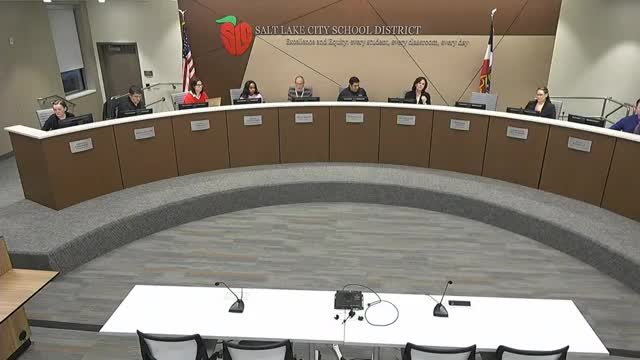Kearsley said the district distributes base funds by student counts, then layers additional allocations for English Learners and “at-risk” factors (largely free-and-reduced-price-lunch eligibility). He told the board the board-distributed student achievement funds total roughly $2.3 million, with an additional $1.4 million for ELL and $1.5 million for other at-risk allocations in the current year.
Kearsley noted an estimated $1.7 million drop in Title I (federal) funding for next year compared with current-year allocations, and said the district has become more conservative in projecting Title I because the actual federal allocation arrives after schools have already planned staffing based on earlier estimates. He said schools carried over about $5.9 million districtwide this year compared with roughly $7 million the prior year and characterized that use of carryover as expected following one-time COVID-era ESSER grants.
The presentation covered how the district allocates funds for substitutes, library materials, extracurricular activities and site discretionary dollars, and a separate sheet showed FTE allocations and staffing ratios used for budgeting.
Kearsley also flagged a state legislative change that temporarily increased per-teacher “legislative supply” funding this year; he said that money was one-time and the district has left that column blank for next year until the legislature finalizes future amounts.
On student fees, Superintendent Tiffany Grant and Kearsley told the board they plan to eliminate district curricular and co-curricular fees next year and to cover those costs with a mix of one-time state funding and local dollars during the transition. Grant said the state allocated three years of one-time funding; the district will receive 50% of that money next year and the remainder in the year after, and the district plans to hold schools harmless while it designs a longer-term approach to replace the revenue after state one-time funds are exhausted.
Kearsley answered board questions about charters, clarifying that district sheets exclude charter schools because charter funding comes from state allocations separate from the district discretionary distributions. He also said special-education add-ons and federal special-ed funding are managed outside the discretionary sheets presented and are not included in the per-school discretionary-per-student numbers.
Board members pressed for more detail on several points. Trustee Ashley Anderson asked for documentation backing certain allocation choices; Trustee Amanda Longwell asked how the district supports schools that host self-contained special-education units. Kearsley said hub schools do receive additional FTE and that special-education teacher salaries and supplies are paid from special-education add-ons and federal funds, not the discretionary allocation sheet.
On demographic forecasting, trustees asked the administration to commission or refresh a demographic study; Sam Quants, the district’s IT director who helps produce enrollment projections, said the district had a recent applied-economics refresh for elementary schools and recommended refreshing the secondary projections on roughly a five-year cadence. The board directed staff to get cost estimates for a demographic refresh so trustees can consider commissioning updated projections.
Kearsley closed by noting the budget in June will be the formal approval point; the materials presented on Feb. 4 are a building block for the months of work the administration will bring back to the board.
Why it matters: School discretionary dollars and federal Title I funding directly affect classroom materials, extracurriculars and staff allocations. The district’s choice to eliminate curricular fees and to use one-time state money to replace them next year stops families from paying for required course components in the near term, but it also commits the district to find sustainable funding after the one-time money expires.
The board did not vote on the allocations on Feb. 4; Trustees asked for supplemental materials (demographic refresh costs, more detail on Title I variance and on special-education add-ons) before final budget votes in the spring.











